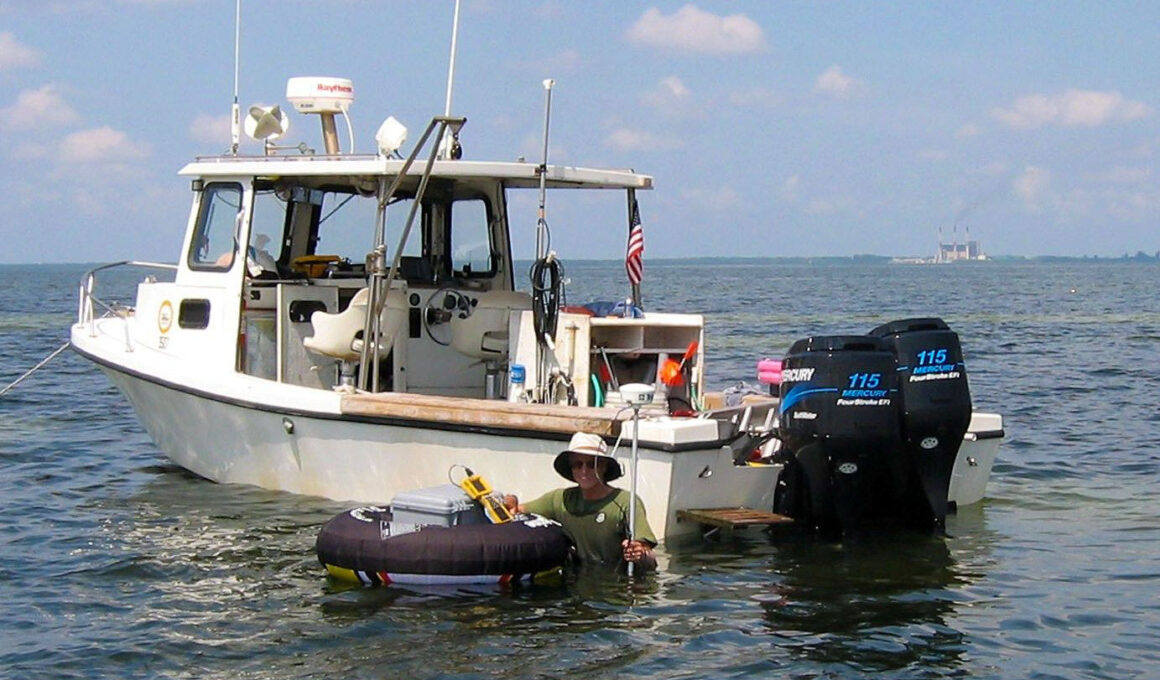He was on the Bay even before the transformation began and when the first BASIS — Tampa Bay Area Scientific Information Symposium — kicked off in 1982, he was there, presenting a paper entitled “Primary Production in Tampa Bay: A Review.” More than 30 years later, he’s on the agenda for the 2015 BASIS with a study looking at long-term underwater light climate adaptions and trends of submerged seagrass abundance.
When Johansson first arrived at the University of South Florida to study marine biology in 1972, Tampa Bay was at its worst. The Wilson-Grizzle bill mandating advanced wastewater treatment for plants discharging to Tampa Bay had just passed the Florida Legislature. The stench rising from Hillsborough Bay was said to cause silver to tarnish in homes along Bayshore Boulevard, and the once-bountiful Bay was nearly devoid of life.
[easymedia-gallery med=”6564″ size=”150,150″ align=”center”]Johansson, then a student at the University of Gothenburg in Sweden, didn’t know much about Tampa Bay but his advisor suggested USF’s College of Marine Biology as the place to study ocean biology. “They didn’t have a lot of the classes I wanted in Sweden but my mentor knew a director at USF and they helped me get into the school.”
After graduating with a master’s degree, Johansson spent a couple of years working for Westinghouse Environmental Systems monitoring entrainment at power plants, until a job opened up with the city of Tampa’s Bay Study Group in 1978.
“The bay was still pretty bad,” he recalled. “We had big blooms in the summer and fall and it was pea soup for several months every year.”
A comprehensive study — believed to have been the first of its kind in the world — had indicated that excess nitrogen from barely treated sewage was sparking the massive algal blooms in Hillsborough Bay. That study was the basis for the Wilson-Grizzle Bill and the construction of the Howard F. Curren Advanced Wastewater Treatment Plant.
“It was really a keystone study for the world because people had ideas about what caused the problems, but it had never been clearly shown before,” Johansson said. “This was an opportunity to document the difference.”
The Bay Study Group was formed to track changes in water quality before and after the plant was built but the changes weren’t apparent immediately. “When it came online in 1979, people expected to see immediate improvements,” Johansson said. “Some people were a little worried for the first couple of years when there wasn’t any significant difference in water quality.”
By 1983, though, water quality had clearly improved. Johansson and his team were on the bay documenting the changes — incremental at first and then amazing even to the researchers who saw them unfolding every day. Hillsborough Bay, once the most polluted segment of the bay, also has shown the strongest recovery, going from less than a half-acre of seagrasses in the early 1970s to nearly 2,000 acres in 2014.
Now retired from the Bay Study Group, Johansson is working with Janicki Environmental, Inc., still focused on seagrasses and how they interact within a complex ecosystem.
And like most scientists who have tracked the health of the bay, Johansson is surprised at how quickly it rebounded once nitrogen inputs were cut, but concerned that bay managers will become complacent now that the once-ambitious goals have been met.
“Water quality improvements don’t happen in a straight line,” he said. “Last year nearly everything came back but that could change in a bad year. We need to continue to manage and protect the bay if we expect to maintain what we’ve achieved.”
[su_divider]